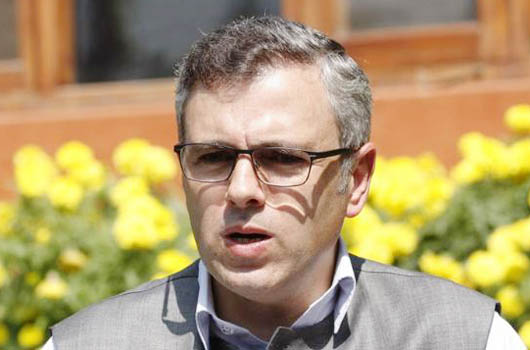Srinagar, Dec 23: The outgoing Jammu and Kashmir Chief Minister Omar Abdullah today hinted at an intriguing possibility of supporting his party National Conference's (NC) bitter political rival PDP in forming a government in the state after the hung verdict in the Assembly polls.
Mufti Mohammed Sayeed's PDP has emerged as the single largest party with 28 seats, 16 short of a majority in the 87-member legislature. BJP got 25 seats and NC 17, including two Independents supported by it, followed by the Congress with 12 seats.
PDP's options are either to align with BJP or cobble together a government with the support of Congress and some independents. Support from NC has never been considered as an option by political observers.
Introducing a new element in the scenario, Omar told PTI that it was for PDP to approach him. "I don't rule out or rule in anything thereafter," he said.
Reminded that NC's support to PDP has never been envisaged, Omar said, "was Mr Nitish Kumar's coming together with Mr Lalu Prasad Yadav in Bihar ever thought of?"
He virtually ruled out any support to the BJP, saying that there was only one per cent likelihood of that. "I am leaving one per cent crack open."
Omar, however, maintained that he would not be approaching anyone. "But that does not stop anyone from approaching me," he said.
Putting the onus on PDP, BJP and Congress to cobble up a government, Omar said it was not for him to unilaterally extend support to any formation.
Asked about BJP Chief Amit Shah's remarks at a press conference that he was keeping all options open on government formation, Omar said he had not got any call from Shah.
Acknowledging that he was earlier today not sure of returning as an MLA, he said now he was going to sit back and leave it to other parties to form the new government.
There is only one road for the NC and that is upwards and "we have an important role to play in coming days."
Omar, however, said that he had expected the PDP to do much better.
The Chief Minister said the BJP had done well but had become victim of its own propaganda. "If before elections they had projected themselves to do better than the past, they would have been a relaxed lot today.
"However, their slogans like Mission 44 and Mission 52 only punctured their happiness," he said.
Earlier during his victory run at Beerwah, Omar said NC would play the role of a good and constructive opposition.
"NC is satisfied with its own performance. We went further than what people expected from us. Opinion polls were not giving us so many seats. And I feel that given the situation, if we get 17 seats, no one in the NC should feel bad.
"We are ready to play the role of a good and constructive opposition. And we will see later as to what will happen," Omar told reporters here.
Asked about Congress general secretary and Leader of Opposition in Rajya Sabha, Ghulam Nabi Azad’s reported offer of support to the PDP, Omar said the national party had time and again proved that there were no permanent friends or foes in politics.
"Congress has this quality that they time and again prove that in politics there can be no permanent friends or foes. Azad, perhaps would be ready to do everything to go to Rajya Sabha again and for that even if he has to fall at Mufti’s feet, he will," he said.
Commenting on the possibility of PDP allying with the BJP, Omar said, "I cannot say anything on that. It is for the PDP and the BJP to see".
The NC leader, who lost from Sonawar seat, said he had known that retaining all the eight seats in Srinagar would be difficult.
"I had known that Srinagar district would be difficult for us this time. We had all the eight seats and Sonawar was a constituency which we had won three times out of the last four and there was anti-incumbency against NC. And we had to bear the brunt of the destruction caused by the floods there."






Comments
Add new comment